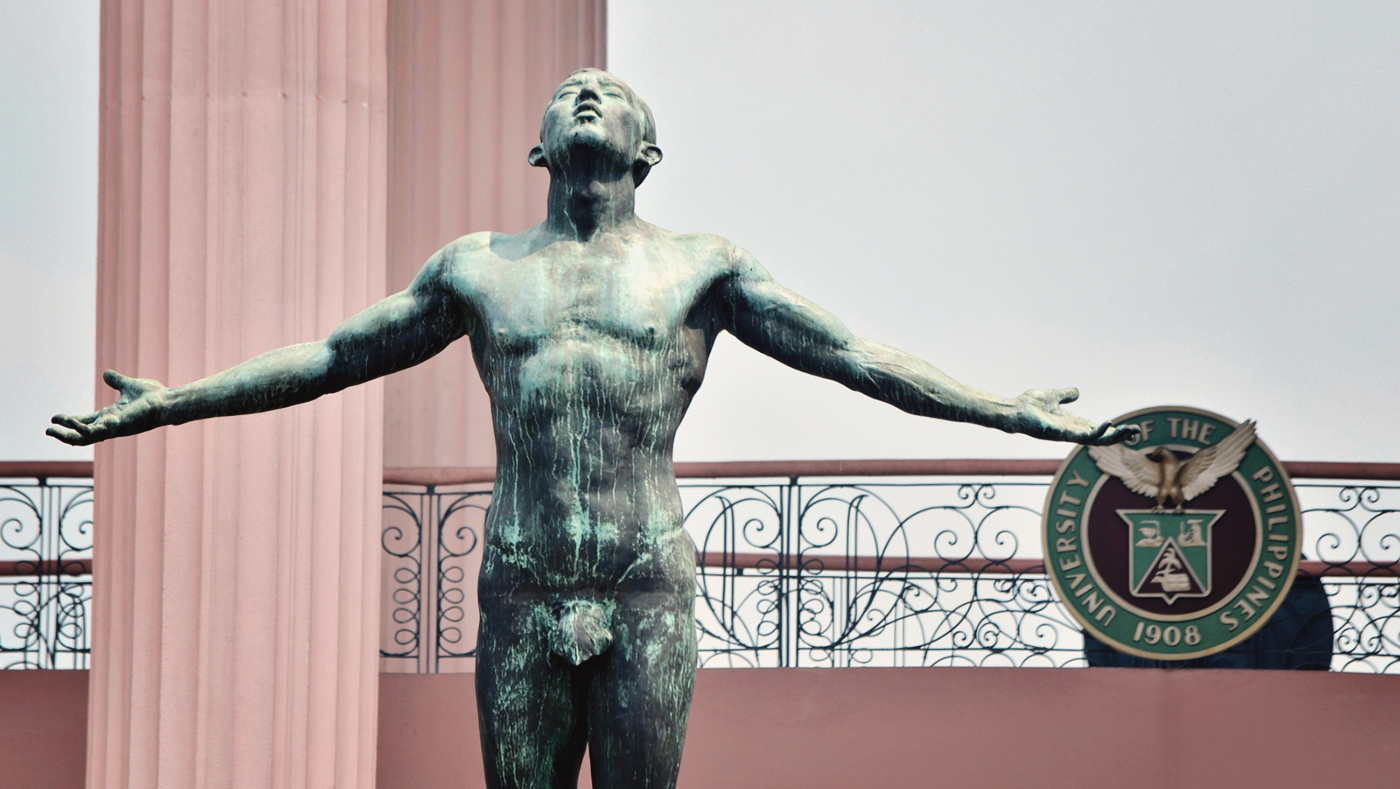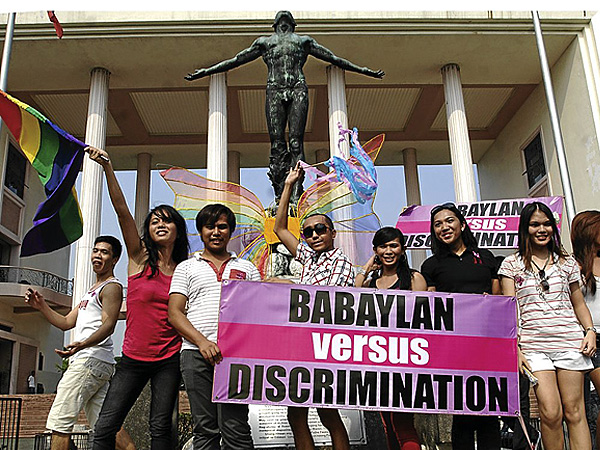By Christelle Delvo

In the past eight months, UP Diliman has become a test site for the latest innovation of Filipino scientists and engineers – an Automated Guideway Transit System (AGTS), the first fully-automated and emission-free rail transport system in the country.
The project is spearheaded by the Department of Science and Technology (DOST) – Metals Industry Research and Development Center in partnership with the University of the Philippines. Funding for its initial phase is provided by the Philippine Council for Industry, Energy and Emerging Technology Research and Development.
The AGTS test track is 465-meters long, running from E. Jacinto Street to C.P. Garcia Avenue on an elevated track 6.1 meters aboveground. This concrete track carries two electrically powered rubber-tired coaches, each with a capacity of 30 passengers.
A prototype of the AGTS had previously been tested in the DOST grounds in Bicutan, Taguig where it ran on a straight 150-meter track. Among the distinguishing features of the current prototype within the campus is the sharp 25-meter radius curve from C.P. Garcia to University Avenue, which if successfully tested will confirm the system’s suitability for central business districts such as those in Makati and Ortigas.
Initially dubbed as a ‘monorail’ system, the AGTS has been modified by its designers to roll on two rails instead of one. DOST Engr. Elljay P. Mutuc said the AGTS now moves along two parallel bars with a distance almost equal to the width of the coaches. He adds that unlike the Metro Rail Transit (MRT), which relies on overhead electrical cables for power, the electrical system of the AGTS is built along the guideway itself.
On its first test run on December 14, the AGTS successfully transported select UP and DOST officials from the track’s start- to end-point in less than five minutes. The testing phase will continue until June to further fine-tune the train’s speed, power, controls and stress systems.
President Benigno Aquino III cited the project “developed by Filipinos for Filipinos” in his State of the Nation Address in July 2011. He said the AGTS would “cost us as little as 100 million pesos per kilometer, much cheaper than the current cost of similar mass transit systems.” Using local resources was four fifths cheaper compared to buying a foreign-built train.
Upon news of the AGTS being built and tested within Diliman, among the first concerns within the UP community was the fate of the campus’s famed jeepneys.
However, in an interview with the Inquirer, Cesar Sta. Maria of the UP Ikot Drivers’ Association said that “the Vice Chancellor for Community Affairs [had] consulted with us, she assured us there was no threat and it was only a test drive.”
DOST Assistant Secretary Bob Dizon also assured that the AGTS is not designed for UP. In a GMA News article, he said the AGTS is envisioned to address traffic problems and become a “feeder system” for the existing mass transport systems like the MRT.
Dr. Jose Regin Regidor of the National Center of Transportation Studies (NCTS) added that the AGTS is better implemented for short distances.
Once first phase test runs are complete, an AGTS of higher capacity will be constructed near the DOST Complex in Taguig.
(photo credits: philippinecollegian.org)


